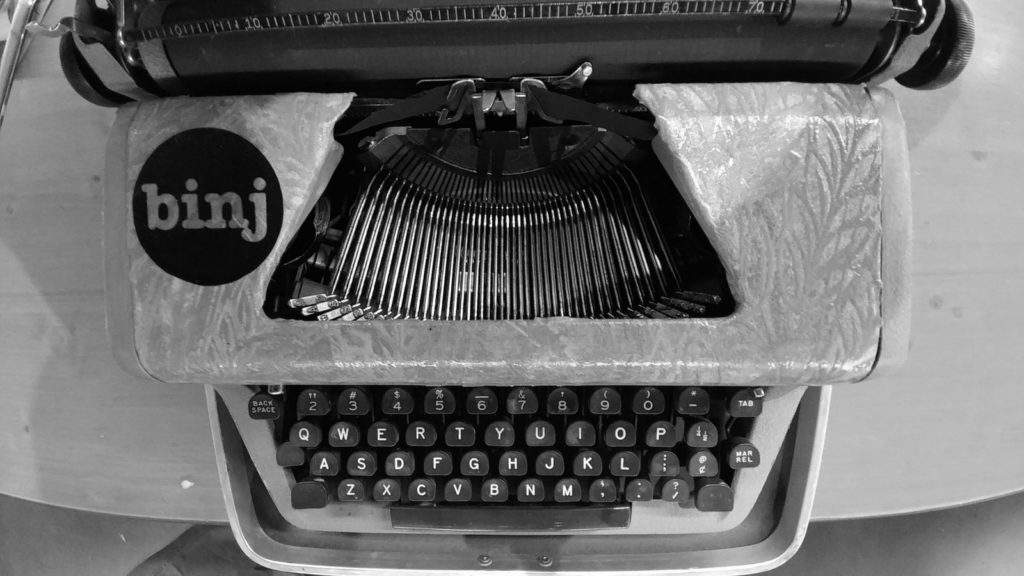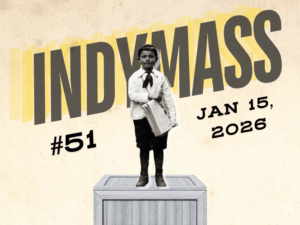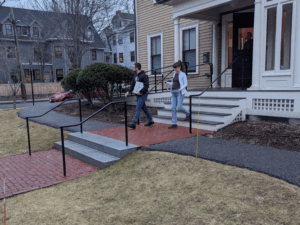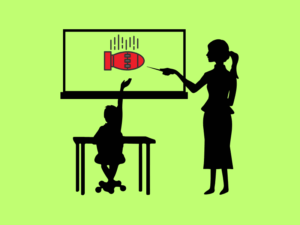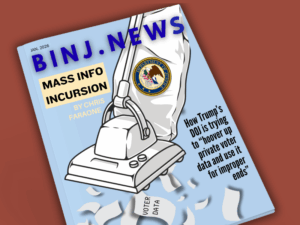Gun laws, limits, and licensing in Mass—in perception and reality
By Minh Do, Chris Faraone, Noel Gasca, Olin Hayes, James Kwon, Abigail Noyes, Alisha Parikh, Autumn Pattison, Selah Pomeranitz, Amanda Rasinski, Max Reyes, Madison Rogers, Riane Roldan, Adrien Salzberg, Tay Thai, Curtis Waltman
Images and infographics by Courtney Lord
In Massachusetts, anyone from legislative insiders to casual 5 o’clock news watchers knows that the Bay State is hardly the proud beacon of progressive priorities that it is often cast as on Fox News. From environmental woes to large corporate handouts, there are countless strikes upon the blue-state image.
On the typically contentious issue of guns, however, Mass is almost always seen through a rose-colored liberal lens. Relative to over-the-top firearm fundamentalists in red states, even the most right-leaning Mass politicians are pacifist hippies. A recent public forum hosted by the Boston Globe and WBUR titled “Tackling Gun Violence” was a nod to that popular narrative and featured Republican Gov. Charlie Baker in conversation with Democratic House Speaker Robert DeLeo, among others. The event was advertised as a discussion about Mass having “the lowest firearm death and disability rate in the continental U.S.” … “the result of a set of policies that were implemented by a bipartisan coalition of lawmakers, working with local advocates and researchers to develop best practices that can set an example for the country.”
The dialogue around guns in this state is complicated, as are the positions of a lot of Massachusetts politicians. Baker, for example, has an “F” rating from the National Rifle Association (NRA) and keeps in the good graces of many Beacon Hill Democrats on the topic of guns, at least publicly. On the other hand, the governor has accepted tens of thousands of dollars in campaign contributions from people affiliated with weapons sellers, manufacturers, and distributors. Bones he’s thrown to firearm enthusiasts have not helped his NRA report card grade, but in 2017 Baker appointed Ron Amidon, then-president of the Gun Owners’ Action League (GOAL), the Commonwealth’s NRA affiliate group, to head the state’s Department of Fish and Game. GOAL lobbies aggressively and has advocated for, among other controversial measures, a repeal to the Bay State’s assault weapons ban.
Compared to every other state, the Commonwealth has undeniably made major strides on gun reform and safety. Especially since the late ’90s, Mass has been at the national legislative forefront and is often recognized as having some of the toughest restrictions anywhere in the US. In 2017, it was ranked as America’s fourth safest state, according to the annual study by the Gifford Law Center. While Mass is often portrayed as a mob-infested murderground in major motion pictures, it is simultaneously hailed in pop culture as a progressive exemplar and has been the subject of gushing national news coverage, like a 2018 puff piece in Vox headed, “Massachusetts offers a model for dealing with gun violence that the rest of the country could follow.”
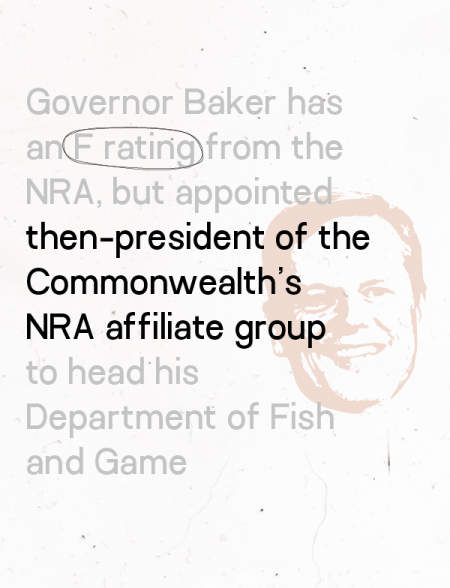 Some of the reputation is deserved; laws here have been applauded by gun control advocates and protested, physically and legally, by gun rights groups. In 2014, state legislators passed a sweeping reform bill focused on increasing background checks, attending to mental health issues, tightening security in schools, and making punishment for gun crimes harsher. A more recent ban on bump stocks, a reaction to the 2018 mass shooting at Marjory Stoneman Douglas High School in Parkland, Florida, has drawn praise from the left as well as criticism and a lawsuit from the right. A “red flag” bill that enables court-approved removal of guns from people considered to pose a threat to themselves or others, also passed last year, has been similarly received.
Some of the reputation is deserved; laws here have been applauded by gun control advocates and protested, physically and legally, by gun rights groups. In 2014, state legislators passed a sweeping reform bill focused on increasing background checks, attending to mental health issues, tightening security in schools, and making punishment for gun crimes harsher. A more recent ban on bump stocks, a reaction to the 2018 mass shooting at Marjory Stoneman Douglas High School in Parkland, Florida, has drawn praise from the left as well as criticism and a lawsuit from the right. A “red flag” bill that enables court-approved removal of guns from people considered to pose a threat to themselves or others, also passed last year, has been similarly received.
Compared to the Bay State’s safety bona fides, there is relatively scant attention paid to firearms within our borders, licensed or otherwise. The same goes for gun dealers, ranges, taxpayer-subsidized police militarization, and lobbyists who push to deregulate all of the above. In part due to the common perception that Mass is a gun-free refuge, many of these tidbits go unnoticed—from the 262 firearm deaths that occurred in 2017 (the last year for which the Centers for Disease Control and Prevention (CDC) have made statistics available), to politicians who speak out against violence but pocket campaign dollars from gun makers, to the fact that guns made in or distributed by Commonwealth companies have been used in mass shootings. According to Bureau of Alcohol, Tobacco, Firearms and Explosives (ATF) statistics from 2016, Mass produced more than 3 million guns that year alone, far more than any other state (neighboring New Hampshire was a distant second) and accounting for approximately one-quarter of all guns made in the US.
Since 2018, the Boston Institute for Nonprofit Journalism, in collaboration with MuckRock, the Emerson College Department of Journalism, and the Emerson College Engagement Lab, has thoroughly examined and reported on the unchecked nature of weapons procurement by state and municipal law enforcement agencies in Mass. In one discovery that emerged from documents secured via public records requests, our team revealed that certain law enforcement agencies continued doing business with companies that Attorney General Maura Healey found violated state law. In some cases, individuals from those businesses donated to pols including Gov. Baker while still under investigation.
In this all-encompassing installment, we explore beyond the fire power that is procured by police and focus on the weapons owned by members of the public—legally as well as illegally—that those very same departments are tasked with licensing and keeping tabs on. By looking past the myth and surveying the gun culture and economy across the Commonwealth, our intention is to portray a more accurate picture than popular perception provides and that, like our reporting on the millions of dollars that State Police have spent over budget on weapons, sidesteps the polarized politics of the national gun debate.
WHO BUYS?
In Alabama, which has one of the top 10 worst firearm death rates in the country, there is no substantial wait time for getting a gun. The licensing process begins when you fill out a form at the gun store, sort of like if you could get licensed to drive at a car dealership. It’s a similar scenario in Tennessee, where state law does not require owners to obtain a license, register their firearms, or report lost or stolen guns. There’s also no waiting period or limit on the number of firearms that may be purchased at one time. In March, police in Brockton found three young men from the Volunteer State sitting in a car holding a warrior’s trove that included several pistols and an AK-47, as well as ammunition, black gloves, and masks.
Though firearms from other states end up in Massachusetts often, as far as the Commonwealth’s own licensing affairs are concerned, things work differently here. People everywhere are required to fill out some form or another to purchase a gun; by contrast, the process here is comparatively longer, more thorough, and more selective than anyplace else by several measures. Reform crusaders say such differences are part of the reason that Mass has one of the lowest gun death rates in the nation; in 2017, according to CDC data, the number of deaths per 100,000 Commonwealth residents was 3.7. The only state where people were on average at less risk of being shot and killed was Hawaii (New York’s rate was also 3.7); in Mass, you were several times more likely to die from sepsis than on the wrong side of a gun barrel. Compare that to 2017 firearm death rates of 22.9 and 18.4 in Alabama and Tennessee, respectively.
Massachusetts resident Brian Yule applied for a license to carry in 2016 in Plymouth. Recounting the experience, he said the whole entire process took about six months after he successfully completed a safety course and was interviewed by local law enforcement. Yule, a Plymouth firefighter, described the procedure as “long and drawn out compared to other states,” and his observations match the data.
 A “Review of the Commonwealth’s Firearms License Permitting Process”—released by Mass Auditor Suzanne Bump in 2017 and covering the period between July 1, 2014, and June 30, 2016—showed that Plymouth had one of the longest waits in Mass, with the process taking an average of 116 days to complete—nearly three times the state’s designated 40-day limit.
A “Review of the Commonwealth’s Firearms License Permitting Process”—released by Mass Auditor Suzanne Bump in 2017 and covering the period between July 1, 2014, and June 30, 2016—showed that Plymouth had one of the longest waits in Mass, with the process taking an average of 116 days to complete—nearly three times the state’s designated 40-day limit.
According to that same report, municipal officials largely blame the elongated process on understaffing and a lack of communication with the statewide Department of Criminal Justice Information Services. Making things harder to track and synthesize, wait times fluctuate from town to town; per state law, municipalities have leeway when it comes to gun licensing, from specific application requirements to prescribed wait times.
In Cambridge, obtaining a firearms license is a lot like applying for a job. You need references—specifically, two letters of recommendation that are not from family members and that speak to your good character and intentions. You also need a cover letter detailing why you are seeking the license, plus the requisite ID, proof of residence, the statewide standard $100 fee, and a basic firearms safety course certificate.
Rather than make the process additionally onerous like Cambridge, others have streamlined applications. In Duxbury, the town proactively notes that returning applicants don’t need a safety course certificate; the policy applies statewide, but many local administrators leave it off their websites. Most police departments list requirements for firearms license applications online, but their checklists differ, in some cases dramatically. Newton, like Cambridge, requires two character references. Revere and Nantucket ask for three. In Western Mass, however, towns like Deerfield and Peru simply link to the state’s application website.
Our efforts to obtain gun license data for 2018 were ignored by the Department of Criminal Justice Information Services. One previous snapshot of Commonwealth ownership came in a comprehensive 2016 WBZ I-Team report that compiled information on active firearms licenses. That analysis, built on Massachusetts Department of Public Safety data and other primary sources, showed the most licenses in the most populated cities. When accounting for population, the hottest towns were largely found throughout the western half of Mass, as well as along the state’s northern and southern borders. More populated urban areas have less licenses per capita.
The aforementioned survey also explored license denials from 2006 to 2016, which paint a different picture. Cities mostly had the highest denial rates, with Boston having the most (468), followed by other large municipalities including Lawrence (142), Lowell (226), Lynn (146), Quincy (162), Revere (214), Springfield (116), Taunton (144), and Worcester (248). Besides being the biggest cities in the state, many also have the largest minority populations.
In addition to how particular city or town specifications factor into the licensing process, there are other wild cards in play. Under one federal law, any applicant convicted of a misdemeanor or a crime for which the sentence is two years or less is not exempt from owning a firearm. Which is problematic here because some Massachusetts laws are relatively strict, with certain misdemeanors carrying two-and-a-half-year sentences.
At the local level, no town’s firearm laws can override or be less stringent than those set by the state. Confusing matters even further than the baseline state and federal background and fingerprint checks, stringency is not always so black and white, or necessarily applied in accordance with Mass law. The licensing process is often drawn out longer than it is supposed to be, with the majority of municipalities failing to meet the state’s 40-day deadline for application processing. According to the Massachusetts auditor’s report from 2017, only 38 of 347 local licensing authorities had average wait times that were within the mandated limit. The average wait statewide was 65 days.
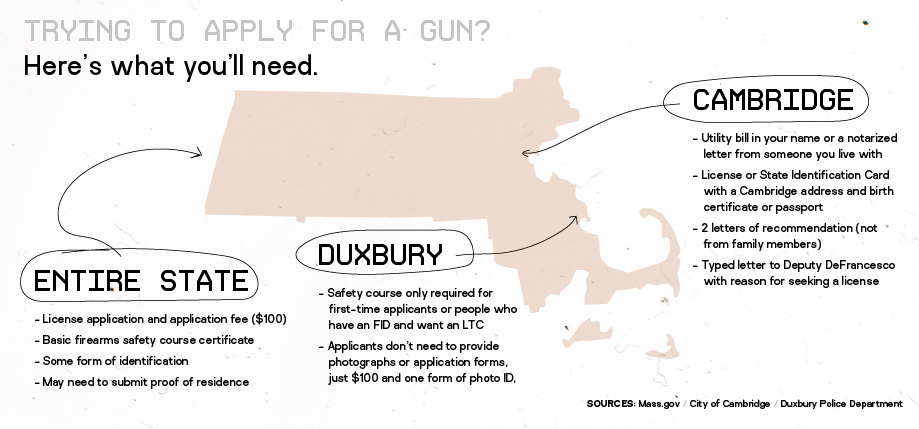
The Revere Police Department notes on its website that applicants need three letters of recommendation that are not from family members and that are written by people “of good moral character and must have known you for at least five years.” In periods for which numbers are available, Revere’s waiting period has been relatively long, in some cases up to more than 120 days, whereas the wait in some of its neighboring suburbs are on average one-quarter that long.
One Lynn resident who spoke with us applied for his license to carry last year. Jamie Rivera said he understands why towns have different policies and longer application processes. His deference appears to be in line with most Americans; in a Pew Research Center survey conducted last September, less than half of the respondents said the waiting period for buying a gun should be shortened.
“When you apply for a gun in a town that’s closer to a city,” Rivera said, “that’s a lot different than applying for one when you live near the woods.”
Rivera had to complete safety courses, interview with local cops, and pay a fee of $100 with his application. Authorities told him the process could take up to six months. In the end, it took half that long.
“With applying for a license in [dense cities] like Lynn, there’s more likelihood of gun negligence,” Rivera said. “Gun policy tries to combat that by making stricter processes.”
WHO TRIES?
In 1998, the Commonwealth of Massachusetts, under the leadership of Republican Governor Paul Cellucci and Democratic honchos in the House and Senate, banned the sale of semiautomatic assault weapons like AKs, UZIs, AR-15s, revolving cylinder shotguns, and “any semiautomatic weapon that can hold a magazine of more than five rounds.” The Act Relative to Gun Control in the Commonwealth also banned certain high-volume magazines, slapped further restrictions on arms dealers, and granted broad powers to police departments to deny licenses to “unsuitable” applicants.
Over the following decade, the number of active gun licenses in Massachusetts plummeted from nearly 1.5 million in the late 1990s to just 200,000 less than 10 years later (that total has rebounded over the past half-decade and nearly hit 400,000 last year). Violent crime also decreased, which hasn’t stopped reform. Even in instances when bullet-ridden episodes erupted elsewhere, Bay State politicians have responded, with varying results.
 Following the 2012 mass shooting at Sandy Hook Elementary School in Newtown, Connecticut, that left more than two dozen people dead, states across the country rushed to pass rigorous legislation aiming to prevent similar incidents in their own jurisdictions. Some failed, but policy makers in Mass, led by House Speaker DeLeo and then-Sen. President Therese Murray, assembled a committee to investigate gun laws, then delivered recommendations the following year to then-Gov. Deval Patrick, who signed an Act Relative to the Reduction of Gun Violence in 2014.
Following the 2012 mass shooting at Sandy Hook Elementary School in Newtown, Connecticut, that left more than two dozen people dead, states across the country rushed to pass rigorous legislation aiming to prevent similar incidents in their own jurisdictions. Some failed, but policy makers in Mass, led by House Speaker DeLeo and then-Sen. President Therese Murray, assembled a committee to investigate gun laws, then delivered recommendations the following year to then-Gov. Deval Patrick, who signed an Act Relative to the Reduction of Gun Violence in 2014.
Among other changes, Patrick’s actions enhanced sentences for existing gun crimes and brought Massachusetts into compliance with the National Instant Background Check System, which raises red flags in the event that potential gun owners suffer from mental illness and substance abuse issues. Many of the tweaks were initially endorsed by voices on the gun violence prevention side of the national debate but have been criticized as ineffective in reflection. Summarizing various analyses, both statistical and anecdotal, last March WGBH political analyst David S. Bernstein noted that despite “new penalties for failing to safely secure firearms, failing to properly report the private sale or transfer of a firearm, and failing to report a lost or stolen gun,” an “[Executive Office of Public Safety and Security] report gives no indication … that law enforcement is making good on that threat. Neither does a report … from Northeastern University, assessing the implementation of the 2014 law.”
Assessments of the gun violence reduction act from people in communities that are the most impacted have been no more flattering.
“Look at the outpouring of everything when there’s a mass shooting,” Dr. Stephanie Shapiro Berkson, a strategist for the Mass Coalition to Prevent Gun Violence, said. Also a professor of community health sciences at the University of Illinois at Chicago, Shapiro Berkson added, “Why don’t we have that outpouring in my neighborhood, in lower Roxbury? Why don’t we have the same outpouring and the same attention?”
Following the Pulse Nightclub shooting in Orlando, Florida, in 2016, Attorney General Maura Healey issued a notice to all gun sellers and manufacturers in Massachusetts, warning that her office is “stepping up enforcement of the state’s assault weapons ban, including a crackdown on the sale of copycat weapons.” The AG’s letter led to more than 2,500 grudge buys in a single day and many more over the following months.
Another landmark Massachusetts gun reform came in 2018, in response to the killing of 17 people at Marjory Stoneman Douglas High School in Parkland, Florida. The massacre spurred binding action nationwide, with Mass passing its version of a “Red Flag” law in an Act Further Regulating Certain Weapons. The measure allows relatives or mental health professionals to recommend the removal of a firearm from somebody who is considered to be a danger to themselves or people around them.
Such legislative developments—the response on Beacon Hill—have been touted locally as well as nationally. What’s less commonly acknowledged is the role that Massachusetts, from companies based here to many of its leading politicians, play in gun culture and the firearm economy. In the celebration of the Bay State’s statistical safety, it’s rarely noted that gun makers and distributors in our backyard have vended weapons that were used in some of the most horrendous bloodbaths in memory. Or that open markets in neighboring Second Amendment gracelands like New Hampshire stoke the fire.
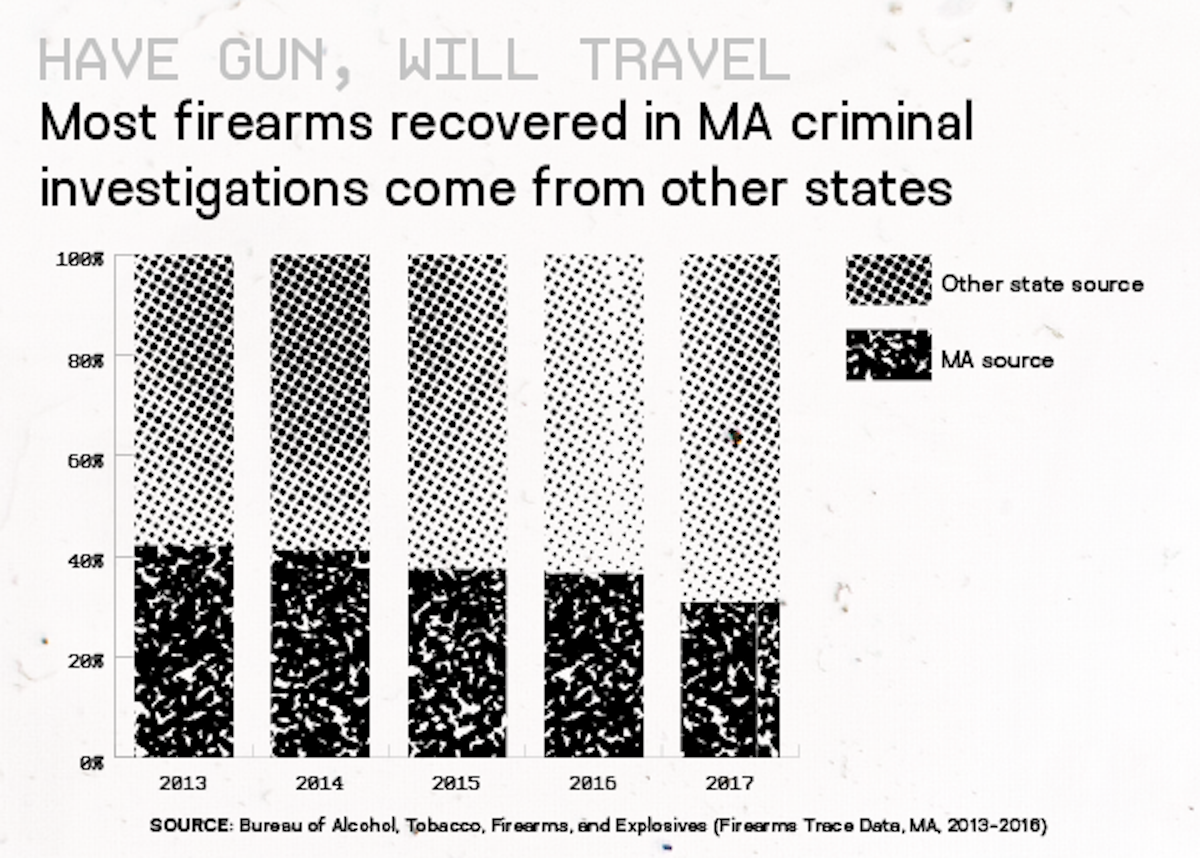
WHO LIES?
In 2017, a Manchester, New Hampshire woman went to prison for purchasing a gun and ammunition in her state that was intended for a friend with felony convictions on his record. The woman lied to the clerk at the gun store where she bought the firearm, saying that it was for her personal use. It was later found out that she gave the piece, which was connected to a shooting in Leominster, to her friend in Massachusetts.
Two years earlier, another New Hampshire woman bought a gun in Plaistow, falsely claimed the firearm was for her, then proceeded to deliver the 9 mm handgun to a Commonwealth resident.
In one case fit for tabloid fodder, a Boston Police Department officer was convicted of lying about purchasing two firearms for himself when he was in fact buying for friends. The weapons were illegal for civilian use in Massachusetts, while one of the guns was later found in the possession of a reputed gang member.
Individual straw purchasing cases differ in specifics and their level of shock value. Generally, a straw purchaser is anybody who serves as the proxy in a firearm transaction, whether a friend, romantic partner, or even a stranger who’s connected to a trafficking ring. These situations involve guns being secured by somebody who qualifies under applicable laws for someone who doesn’t. And often lead to firepower flowing over borders into states like Massachusetts.
 According to 2017 ATF data, less than a third of all guns recovered in Mass as part of police investigations were purchased in the state. Nearly 70 percent were from 43 other states, with the most guns coming from New Hampshire and Maine.
According to 2017 ATF data, less than a third of all guns recovered in Mass as part of police investigations were purchased in the state. Nearly 70 percent were from 43 other states, with the most guns coming from New Hampshire and Maine.
“The vast majority of people still get a gun [in Massachusetts] … but the NRA has made a lot of people believe that they can’t, so they try to go elsewhere to get it,” said Dr. Jack McDevitt, director of Northeastern University’s Institute on Race and Justice. He continues, “They will try to go to New Hampshire, or Maine, or Virginia, and ask somebody who lives there to buy a gun and you know, give them 50 bucks and let them go buy a $100 or $50 gun. And then they will do it for you.”
Unlike Massachusetts, which currently has an A- from Gifford Law Center’s Annual Gun Law Scorecard, New Hampshire, Vermont, and Maine all have an F rating. The center assigns positive points for gun safety policies like private background checks and risk protection orders, and negatively values black eyes like concealed carry. Since New Hampshire and Maine removed their requirements for a license to pack a concealed weapon, Mass has seen an influx of guns from those states.
In practice, when a person buys a firearm from a licensed dealer, they are required to fill out a form authorizing they are the actual buyer of the firearm, which does not apply if they are purchasing on behalf of another party. Straw purchasing is a federal crime and is punishable for both the dummy buyer and the person they pass goods to. Which hasn’t always been such a deterrent; according to an ATF study published in 2000, straw purchasing accounted for almost half (46 percent) of 1,530 firearms trafficking investigations reviewed and was used to procure nearly 26,000 trafficked firearms nationwide. A 2007 UPenn study found that “guns purchased in bulk were up to 64% more likely to be used for illegal purposes than guns purchased individually.”
In an effort to combat gun trafficking, some states have limited the number of guns that people can purchase in a short amount of time. Laws to that effect have been passed in New Jersey (2009), California (2000), and before those two states in Virginia, which adopted a one-gun-a-month measure in 1993, after the commonwealth was noted as the primary source of guns recovered in surrounding states used in a crime. Following the passage of that law, studies showed the odds of recovering a gun sourced from Virginia dropped for states all the way up to New England—71 percent in New York; 66 percent in New Jersey, Connecticut, and Rhode Island; and 72 percent in Massachusetts.
In 2012, Republican Virginia Gov. Robert F. McDonnell signed a repeal of the one-gun-a-month law.
 WHO DIES?
WHO DIES?
According to the CDC, social determinants of health include “conditions in the places where people live, learn, work, and play.” Education, for example, impacts outcomes differently. One 10-year study by researchers at Columbia University published in 2010 shows what those conditions can look like across community lines: White Massachusetts residents had the lowest gun violence death rate in the country, while the state overall had the third largest divide in gun death rates between black and white people. Black people living in Massachusetts were four times more likely to die from gun violence than white people, according to CDC data.
Dr. McDevitt attributed a lot of homicides in Mass to street violence: “Most of our gangs are African American or Latin and that’s the majority of homicide in Massachusetts. Not all of them, but the majority.”
Dr. Shapiro Berkson of the University of Illinois at Chicago cautioned against blaming community members for homicides or gang violence. Factors outside a person’s immediate control, she said, like disparities in social determinants of health between neighborhoods, may play an active role in tragedy.
“To me,” Shapiro Berkson said, “homicide seemed to be a direct impact of segregation and racism.”
Speaking to the lasting impact of bigoted residential policies, one 24-year study that measured the impact of racial integration found that segregated neighborhoods may increase the black-white firearm homicide disparity. The study hypothesizes that living in a segregated neighborhood may increase levels of black deprivation and disadvantage, in turn leading to greater instances of violence in impoverished areas due to lack of resources, desperation, and gang violence. In short, growing up in a neighborhood impacted by homicides can affect someone’s life in ways beyond the immediately obvious, affecting the risk of other negative health outcomes.
“Think of physical activity,” Shapiro Berkson said. “If you live in a community where there’s not a lot of homicides, you’re gonna go out to the parks, you’re gonna exercise, you’re gonna be active. If you live in a community where there’s a lot of homicides, you’re gonna stay inside and play video games.”
Beneath the surface perception of Mass as a gun-free oasis, there is the real-life toll of violence. Working in response to that reality, the Mass Coalition to Prevent Gun Violence advocates for stronger gun laws at the state and local level. The organization was created in the wake of the Sandy Hook shooting in 2012 and has become something of a foil to GOAL on Beacon Hill.
Angus McQuilken, a co-founder of the gun violence prevention coalition, applauds Mass for its relatively ambitious state gun laws, but still calls for increased transparency and oversight.
“We have been working closely with police chiefs to improve our laws in this regard,” McQuilken said. “Our experience is that our police chiefs on a local level take their jobs … and the responsibility that they hold in the licensing process very seriously. But it’s important to know that even in the state with the most comprehensive and effective gun laws in the country, the percentage of licenses that are actually denied is very slim.”
Despite the Commonwealth’s progressive reputation, McQuilken sees gun advocacy groups as a force to be reckoned with. As an example of their influence, he points to Newburyport, where license applicants are directed to GOAL resources for information about safety procedures.
“They [GOAL] have, to my understating, 16,000 members, which is a very small percentage of our state’s population,” McQuilken said. “But they raise their voices and make a lot of noise whenever legislation is being considered on Beacon Hill … They have a good amount of influence because they advocate very vocally when new laws are being considered.”
In 2016, hundreds of Second Amendment activists, many of them GOAL-oriented, demonstrated outside of the State House after the attorney general moved to ban “copycat” semiautomatic assault rifles.
“I tend to think that we would all be well-served if police chiefs relied on objective information to share with applicants for gun licenses,” McQuilken said. “That doesn’t seem to me to be a proper role for an advocacy organization whose interest is to protect the interests of the firearms industry.”
GOAL did not respond to a request for comment.
Meanwhile, as Mass continues to set liberal standards for gun laws, its hodgepodge of municipal regulations has gone largely unscrutinized—by the media, lawmakers, and, as an apparent result, by the public as well.
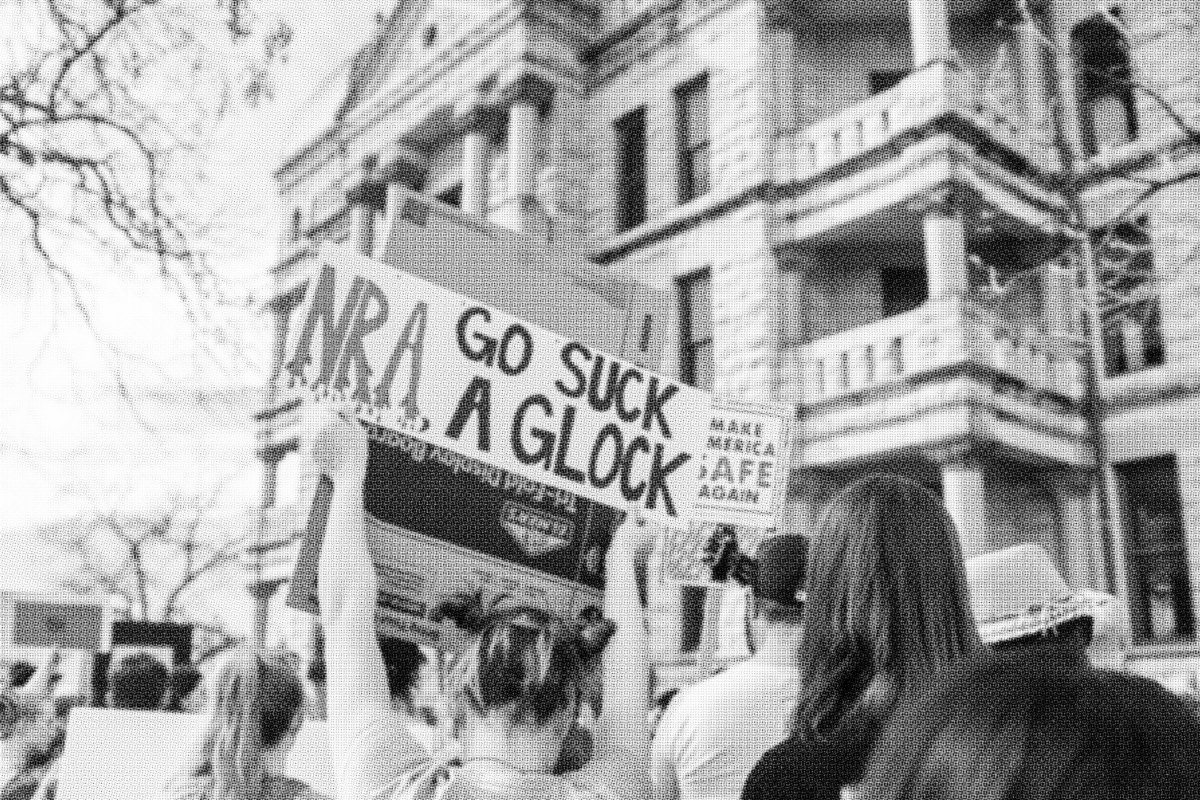
WHO TITHES?
Last June, Gov. Baker’s administration urged local police chiefs across the state to rescind hundreds of gun licenses from individuals who had been previously cleared to carry. The move came after federal officials informed the state that its Firearm Licensing Review Board approved applicants who should have been turned away per federal guidelines. Several district courts have ordered those licenses reinstated, arguing that the state overstepped its bounds. The ordeal is likely one of many contributing factors to Baker’s low NRA approval score.
Despite disapproval from more radical conservatives and right-wing interest groups, Baker has managed to coddle and accept campaign donations from people tied to the gun industry. Stakeholders from the Westfield-based weapons supplier Camfour, which distributed the Remington Bushmaster rifle used in the killing of children and educators at Sandy Hook, have contributed tens of thousands of dollars to Baker and Lt. Gov. Karyn Polito since 2015. As an earlier installment of this report about guns in Mass showed, Baker—as well as other Massachusetts politicians, from county sheriffs to state reps and Polito—has accepted contributions from the full gamut of gun givers, from employees and executives of major Mass-based distributors to proprietors of brick-and-mortar retailers.

The biggest business of the bunch, Springfield-based Smith & Wesson, recently announced a move of some of its Mass workforce to more gun-friendly Missouri. After news broke that the gunman in Parkland used one of the company’s AR-15 assault rifles to murder or maim more than 30 people, Smith & Wesson and its parent company, American Outdoor Brands, became the target of ongoing protests. Still, it remains a critical cog in the state’s large gun economy. The company employs about 1,600 people at its Western Mass plant and, according to federal data, manufactured 1.4 million pistols, 396,710 rifles, and 294,680 revolvers, as well as a smaller number of miscellaneous firearms and shotguns, in Springfield in 2016, the most recent year for which figures are available.
Baker and a host of other top lawmakers are also connected in innumerable ways to investment firms that profit from firearm sales. Cornerstones of the Commonwealth economy, State Street Global Advisors and Fidelity Investments each have millions of shares in multiple funds that are exposed to firearm-related stock. Even the gun-wary Globe is reluctant to acknowledge these connections; though a viral page-one opinion piece that the newspaper ran in 2016 knocked both firms for their industry ties in the print edition, the condemnation of Fidelity and State Street was omitted from the online version.
In accordance with the chill repute that Mass enjoys at home as well as nationally, such unflattering activity on the firearm front hardly registers. Even in spaces where reformers are trying their best to navigate a state with leaders who talk a convincing game but lack the stats to match. Like at a symposium for first responders held in Quincy last September, when Gov. Baker sat in the crowd as Michele Gay, a founder of the group Safe and Sound Schools whose daughter Josephine Grace was killed in the shooting in Newtown, spoke about political efficacy and courage.
“Without strong leadership and leaders putting money where their mouth is, it’s like pushing a giant boulder uphill,” Gay said. “Safety is something we all say we want—the mission statement for every single school in America says something about providing a safe and secure environment. But when it comes down to the realities of what it takes to keep people safe, we often turn away because it’s uncomfortable, expensive, or may cause us to get into arguments.”



